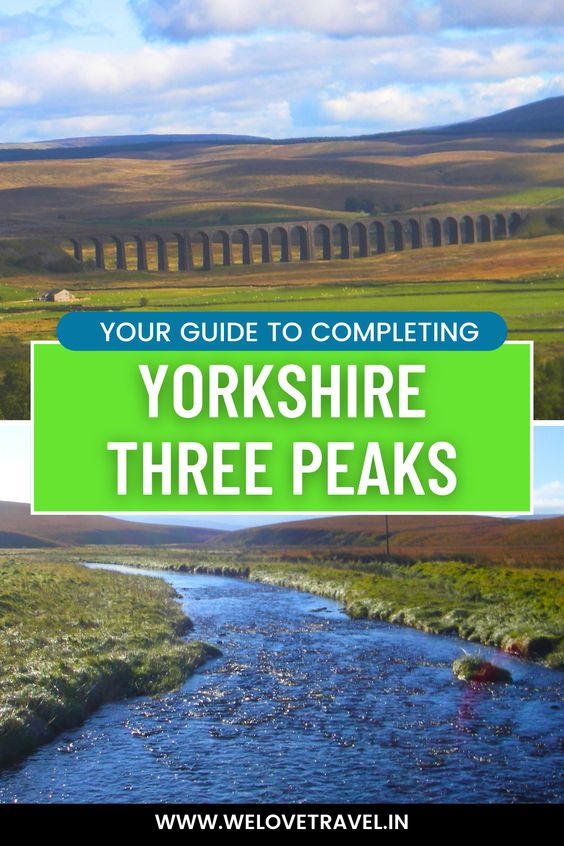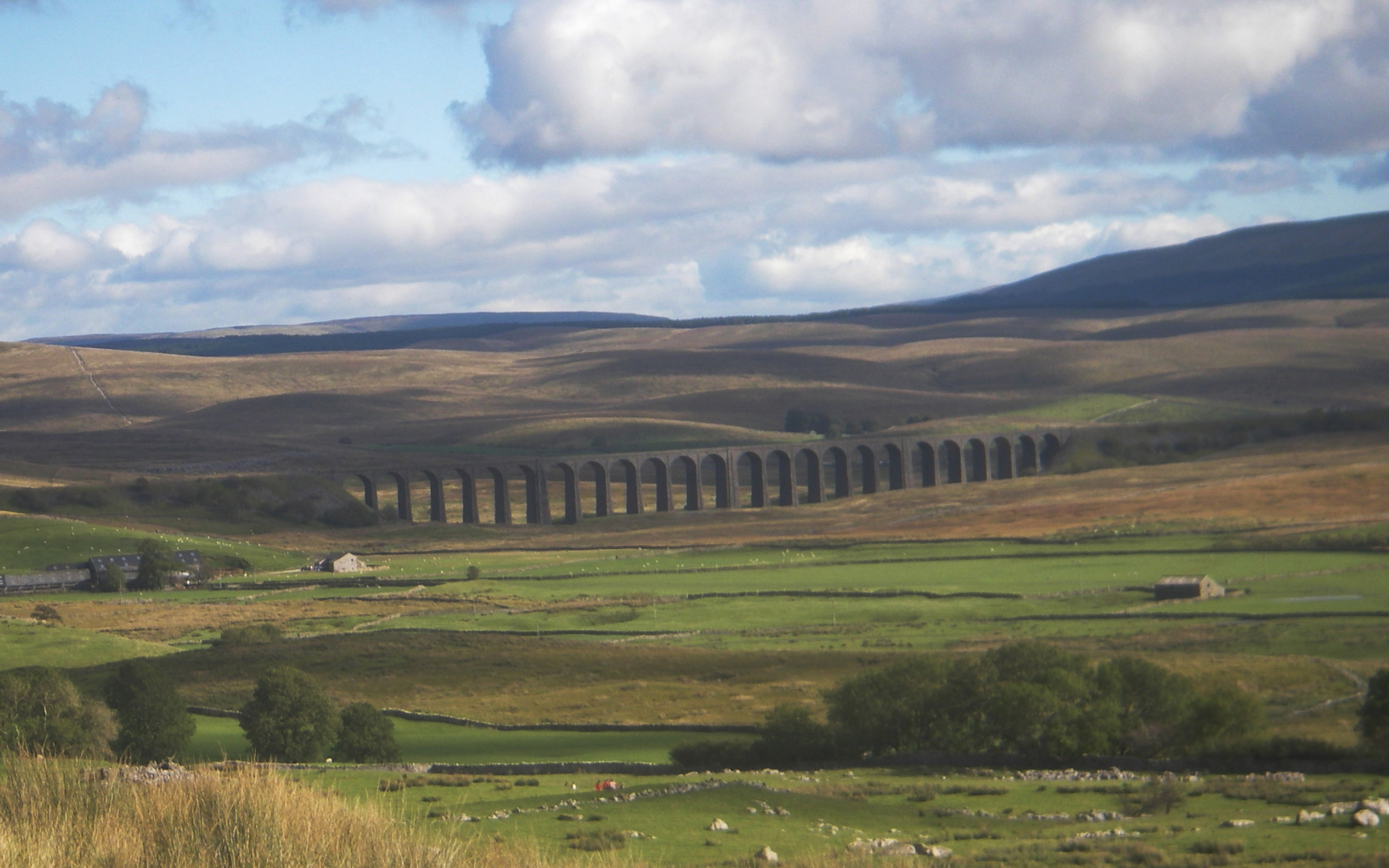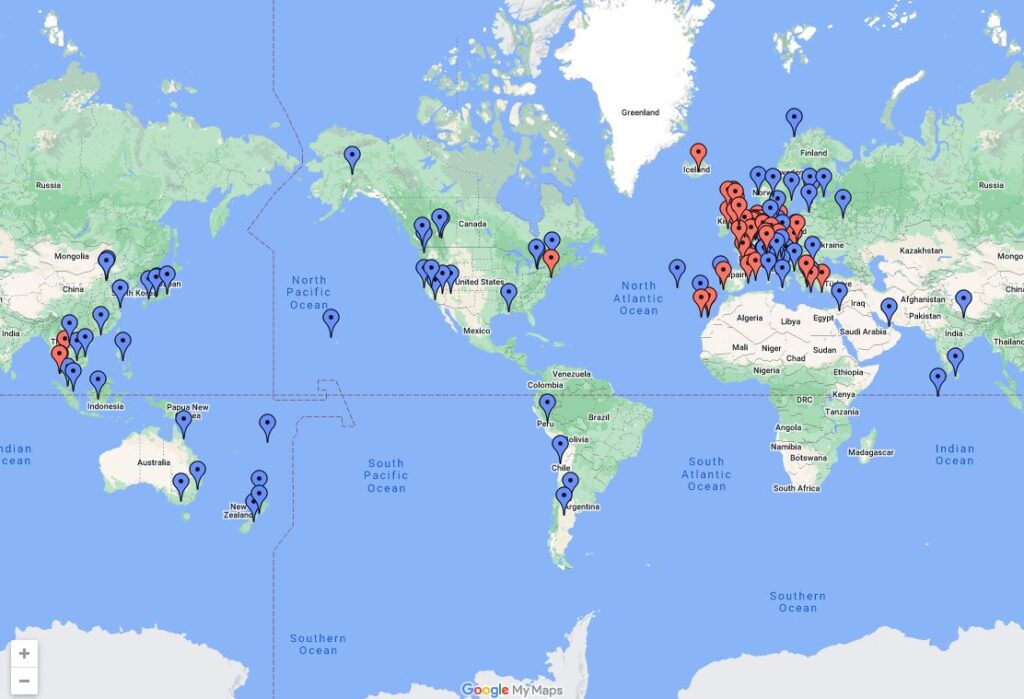What is the Yorkshire Three Peaks Challenge?
The Yorkshire Three Peaks Challenge is a circular hike, completing the three largest peaks in the Yorkshire Dales. The challenge is to complete all three: Pen-Y-Ghent (694 meters), Whernside (736 meters) and Ingleborough (723 meters) in under 12 hours.
The peaks themselves are not particularly grueling individually, but combined, this challenge and the physical exhaustion should not be underestimated. But in return, you are rewarded with some of the best views and scenery in all of the Yorkshire Dales. It’s a beautiful part of the country, and the Yorkshire Three Peaks Challenge is a great way to experience it.
Our experience of completing the Yorkshire Three Peaks Challenge
Not ones to shy away from a challenge, with zero long-distance hiking experience, we decided we wanted to do a physical challenge to raise money for charity. We live along the South Coast in the UK, which isn’t exactly known for its mountains or high hill climbs. We trained as much as we could to get our legs in shape and prepare for what was ahead, spurred on by our fundraising.
Cystic Fibrosis is a condition very close to Mandy’s family, and so with our fundraising efforts completed, all that was left to do was complete the hike! We spent a huge amount of time during the weeks before the challenge, researching our route and asking people for advice and tips. With this in mind, we have written our own guide to completing the Yorkshire Three Peaks Challenge, in the hope it will help anyone else planning their route and looking for information.
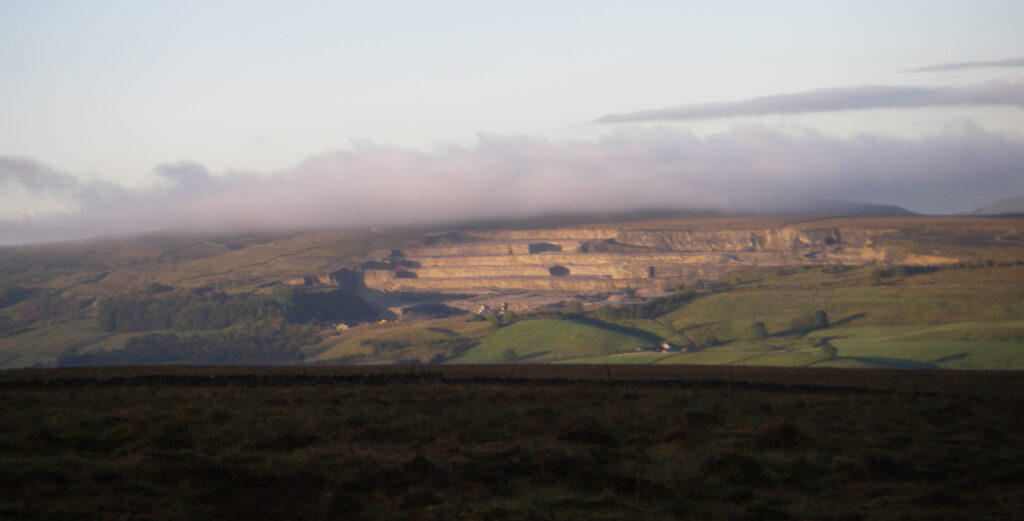
Yorkshire Three Peaks Challenge: The Route
Your starting point will be the cute village of Horton-in-Ribbersdale. The official starting point is outside the Pen-y-Ghent Cafe in the center of the village. You can choose to sign in at the Cafe to make your times official, but this isn’t compulsory (we chose not to).
There is free parking in the village, in a lay-by opposite the church. Or there’s a car park which is £2 all day. The car parks do fill up quickly though, so we advise getting there early!
Peak 1: Pen-Y-Ghent
Pen-y-Ghent is good starting peak. You’re feeling fresh, it’s easy to get to and at 694 meters, it is the smallest of the three Yorkshire Peaks.
From Pen-y-Ghent Cafe, head South towards the Golden Lion Pub (there is a church and graveyard opposite it). Follow the road along as it bares left and take the second road on your left. It’s a single track lane, which leads you straight to a place called Brackenbottom.
Eventually you’ll come across a barn (it’s the first building you’ll come across down the lane, so it’s hard to miss). You’ll see a wooden post with “Pen-y-Ghent” and it’s distance written on it, pointing towards the fields. Walk through the gate and through the fields. We started at 5:45am, so it was still dark and difficult to see the path. Don’t worry if this is the case, just head in the direction of Pen-y-Ghent and you can’t go too far wrong. Soon after you’ll hit a hard rock path, which leads to Pennine Way. This will take you up the path to the summit of Pen-y-Ghent.
The official route heads up the South of Pen-y-Ghent, which is the easiest and quickest route. As you near the summit there is some rock face you’ll need to climb. It’s nothing too difficult, or scary. The best way to explain it would be a “rock staircase”. You may need to get on your hands and feet to hoist yourself up to the next level, but it’s easy enough.
The descent is quick and easy, and really puts your hike into perspective. On a clear day you can see the path ahead of you and your next two peaks in the distance. From Pen-y-Ghent to Whernside you’ve got a 12 mile walk.
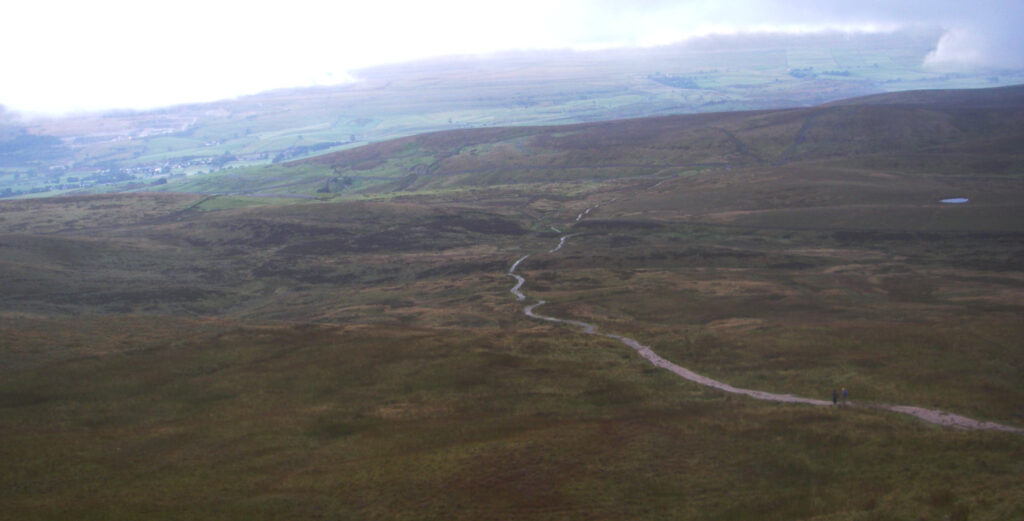
The Route to Whernside
When mapping the route, ensure you follow the trail all the way along and go South of Hull Pot. Most routes take you North West, but the bog in that area is treacherous. Some people have even reported being waist deep in it! The South route of Hull Pot has a few boggy areas, but nothing compared to the old route. Eventually, this will become the official route, so new shingle has been laid making it easy to follow.
Depending on your pace, after 1-2 hours of traipsing across fields, you’ll come out onto Ingleborough Road. The route is difficult to explain as it’s field after field, but we have added a map of the route we used at the bottom of this post to help.
From Ingleborough Road (changing to Gauber Road further down), you can start to see the Ribblehead Viaduct. You can stop for a quick bite to eat or a cup of something hot at the tea van. When you’re ready, cross the road and follow the track towards the viaduct.
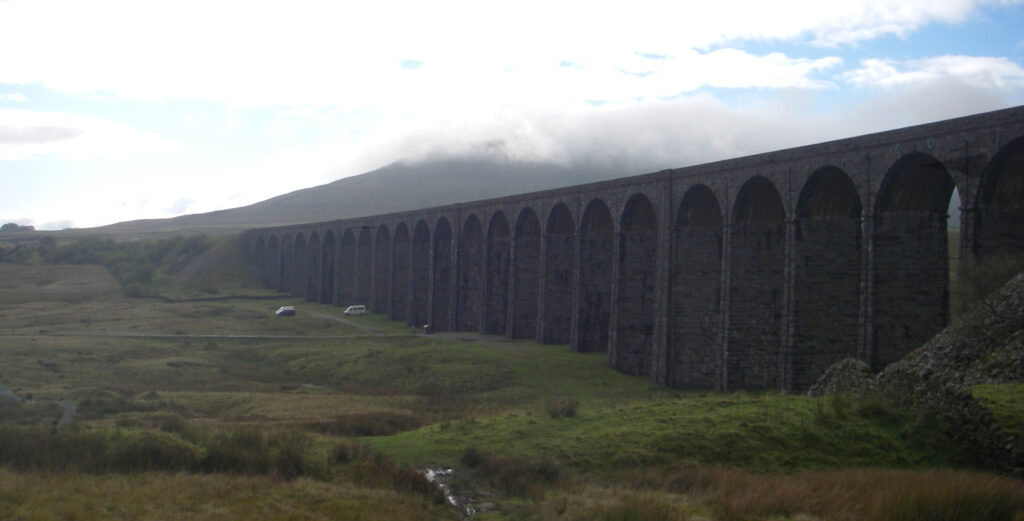
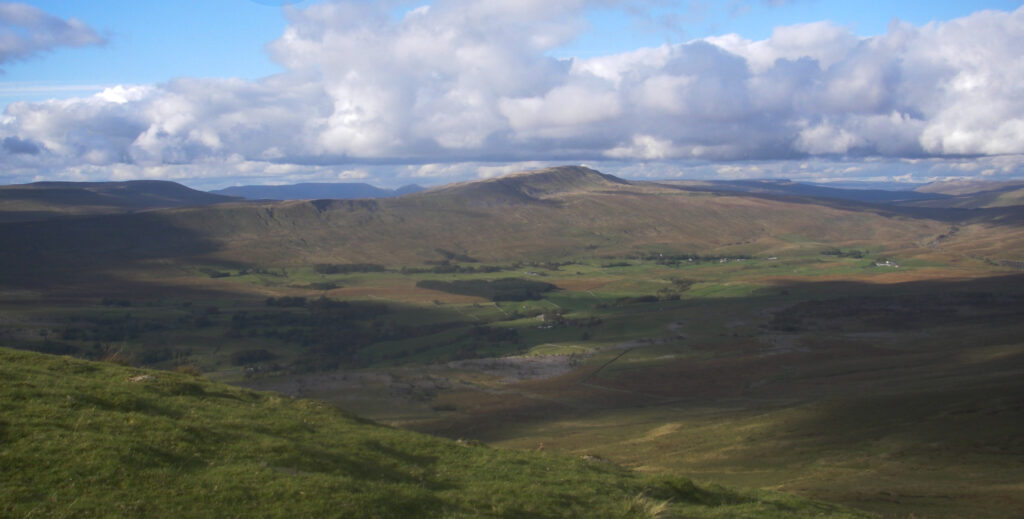
Peak 2: Whernside
The walk to Whernside’s summit is a long, tough trek. It feels like it goes on a lot longer than it really does and is probably your first big challenge of the day. But at 736 meters high, it is your highest peak of the three and a good milestone to tick off.
Follow the viaduct and the railway line all the way along. You’ll cross a small bridge just before the railway line disappears into a tunnel. From here, you begin the very long and tiring incline to the summit of Whernside.
It’s an easy track to follow, although it’s rocky and uneven in places, so it can be hard going on your feet. However, explaining the route is easy because it’s one, single track that leads you directly to the summit. You’ll notice eventually you’re starting to come back on yourself, and you’ll see the viaduct again in the distance.
This is your longest ascent of the three, but it’s very much worth it once you get to the top. On a clear day you can see exactly where you’ve come from and where you’ve got to go next. You can see Pen-y-Ghent in the distance and you get the most amazing views of Ingleborough from the top of Whernside.
The route to Ingleborough
The descent down Whernside is probably the most difficult, as it’s as steep going down as it is going up. However, it feels even more difficult because the whole descent is made up of very steep, narrow and uneven steps. Take it slow and don’t rush. But because your pace needs to slow down and it’s such a tough descent, it does feel like you’re making your way down for what feels like an eternity. Eventually you’ll come across a few houses which are on flat, even ground so it’s a nice, easy walk for your legs and feet.
Keep following this path and you’ll soon end up by the main road, Low Sleights Road. Walk up until you come across The Old Hill Inn on your right hand side. A little further up from the pub, in the stone wall, is a small wooden gate. Climb through that and walk through the fields towards Ingleborough to begin your final peak!
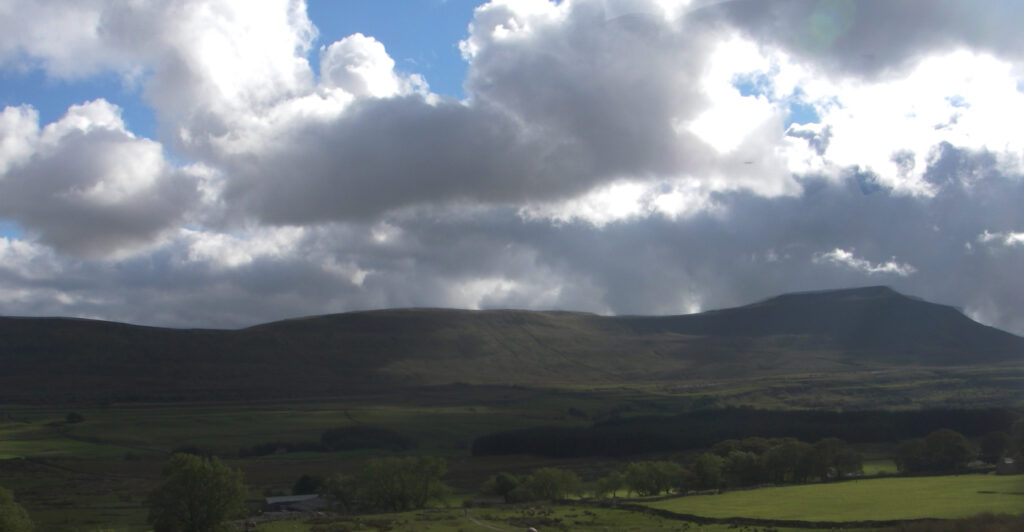
Peak 3: Ingleborough
By this point we were starting to dread Ingleborough. At 724 meters high (your middle height peak), it looked so much higher and steeper than the other two, looming over us as we walked towards it.
Follow the track through the fields and prepare for a little bog (some areas are boggier than others). As you get nearer to Ingleborough there are slab steps to help avoid waterlogged areas. Sometimes though these can be submerged, so good waterproof hiking boots are a must!
Much like Pen-y-Ghent, you may have to use your hands and feet and scramble your way to the top. Keep focused and watch your footing. There’s a small waterfall which runs down Ingleborough and can make the rocks slippery, so just be careful.
Once you get to the summit, you can see the whole circuit before you. From Pen-y-Ghent, across to Ribblehead and over to Whernside. You can see everywhere you’ve walked, allowing you to take it all in. It’s an incredible feeling, you’ll feel exhausted but you’ll love it. And most importantly – celebrate!! You did it!
After a short rest you can start your final descent. The last 5 miles or so back to Horton will be, without a doubt, the worst part of the challenge. Your legs and feet will probably be aching and exhaustion may be starting to set in. It seems further than the sign posts are telling you, but keep at it. Much like your previous two peaks, it’s a single track back down, which takes you straight back to Horton.
We stayed at a B&B in the area which had a lovely pub right next door, so we celebrated with a good hot bath and a nice home cooked hearty meal at the pub. Perfect!
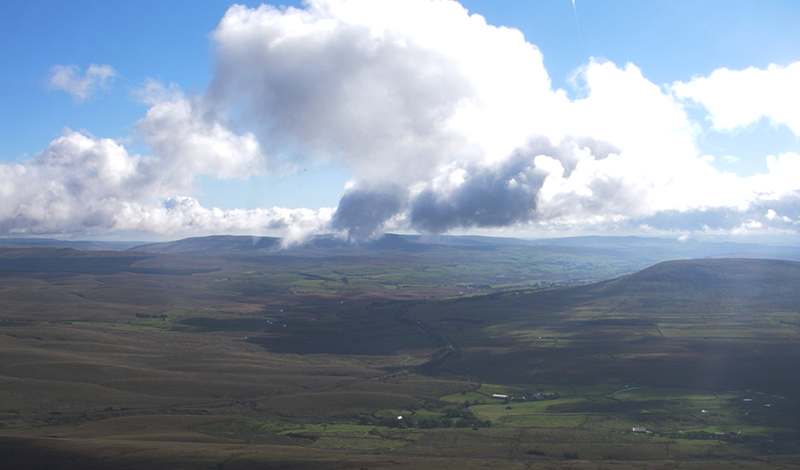
Questions about the Yorkshire Three Peaks Challenge?
What to wear?
First off, good hiking boots are a must! A lot of the ground is uneven and boggy, so you’ll boots that are waterproof and with great ankle support.
Also make sure you pack layers. The British weather is always unpredictable and even in the summer the windchill at the summits can feel pretty fresh. A good base layer will help regulate your body temperature. On top of that we’d recommend a thin t-shirt, then a fleece, which you can roll up in your bag if not needed. Wear a light rainproof jacket on top.
When is the best time of year to do the challenge?
You’ll want to maximise daylight hours, so we’d suggest avoiding the winter, even on those crisp sunny days. The shoulder seasons of spring (April-early June) and autumn (September-late October) are your best bet, when conditions will likely be more comfortable. We completed our challenge in October and we found the conditions to be just right.
What kit do I need for the Yorkshire Three Peaks Challenge?
As a baseline we would suggest:
- A decent rucksack to fit all your kit in!
- Comfortable, waterproof hiking boots (make sure they are well worn in before you start the hike of this will not be comfortable!)
- Hiking clothing (as outlined above), plus warm hiking socks. Waterproof over trousers are also worth packing!
- Walking poles (optional)
- Hat & gloves
- Head torch & spare batteries
- Snacks and a packable lunch. Make sure to have lots of good energy foods to keep you going!
- Water – about 1 liter should be fine. We packed 2 liters and found this was way too much!
- Offline maps (assuming you have the route mapped out on your phone). Otherwise a high quality map you can follow.
- Spare battery pack to keep your phone charged up
- Sun cream and a hat. There’s zero cover, so if it’s hot and sunny you’ll want to be protected.
- First aid kit (plasters, bandage, antiseptic spray, paracetamol)
Are there toilets?
Not really… the only toilets are in Horton-in-Ribblesdale. But you can’t always time when nature calls! Please always be considerate of others. Try to go somewhere private where possible out of sights of others. Try to position yourself away from streams so it doesn’t end up in waterways, and also ensure wherever you go is well away from the trodden path of others.
Are there bins along the route?
There aren’t any bins. Please take all your waste and rubbish with you to look after the beautiful surroundings.
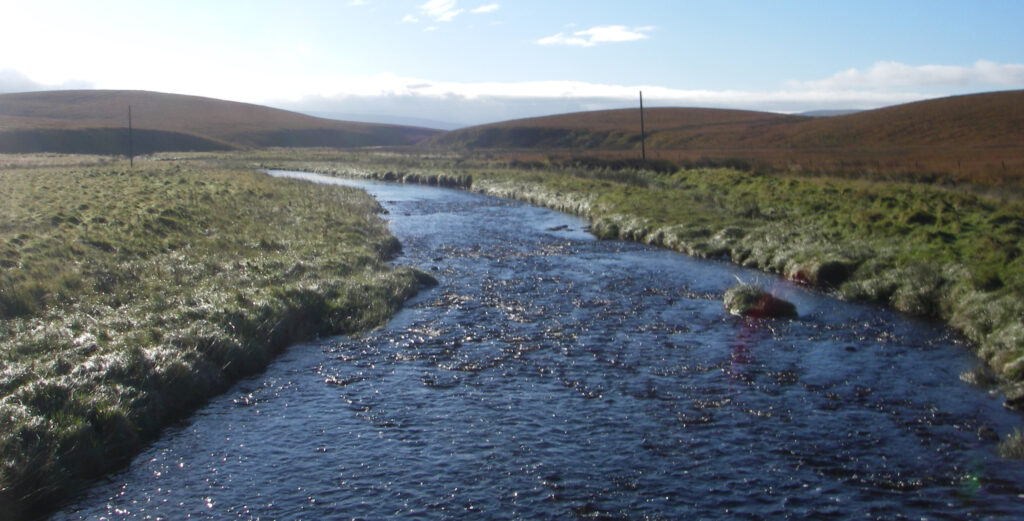
We hope this has helped some of you who are looking for information on your Yorkshire Three Peaks route. It’s an incredible experience and an amazing challenge.
Living down in the South of the UK, where it’s pretty much flat, it was great to push ourselves up each of the peaks and learn how far we could push ourselves. It really is an amazing challenge and we’d recommend it to anyone. It’s definitely a box ticked off on our bucket list and it wasn’t even there to begin with! The Three Peaks Challenge definitely left an impression!
Yorkshire Three Peaks Route
If you want to view the route we took, you can view it below:
If you found our blog post helpful, check out our Insta @welovetravel.in for more updates – if you give us a follow don’t forget to say hey!
Yorkshire Three Peaks Challenge
📌 Pin it for later! 🖤
